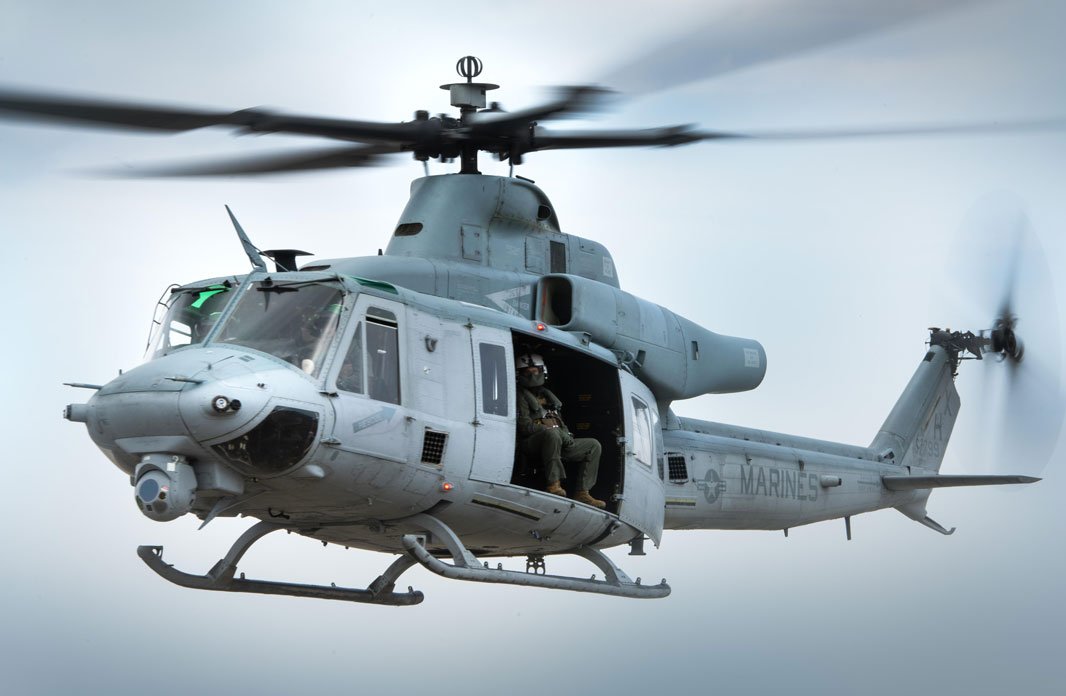The Marine Corps’ UH-1Y helicopter completed an initial flight to test the data transmission of the new Mobile User Objective System (MUOS) Satellite Communications (SATCOM) capability for MQ-25 Stingray April 26 at Pax River.
The team at both the Dedicated Unmanned Carrier Aviation (UCA) Development Environment (DUDE) lab at Webster Outlying Field in St. Inigoes, Maryland, and the Communications Systems Integration Laboratory (CSIL) at Pax River transmitted data utilizing unique test equipment to the UH-1Y during flight, proving MUOS connectivity, resilience, and viability using a maneuvering aircraft.
“This type of testing is a way to show how two very different programs can team up and develop capabilities together,” said Capt. Daniel Fucito, Unmanned Carrier Aviation (PMA-268) program manager.
MUOS is a communications satellite system that provides global connectivity to military networks. The next generation of this system works much faster and has additional payloads that support new waveform capabilities and compatibility with the legacy UHF satellite communications systems.
“Testing MUOS with H-1 will facilitate the MQ-25 test infrastructure development and ensure MUOS connectivity configuration,” said Ray Belcher, MQ-25 Integrated Test Team communications lead. “It also provides an opportunity for the PMA-268 program team to observe MUOS flight characteristics.”
The MQ-25 Stingray will be the world’s first operational, carrier-based unmanned aircraft that will provide aerial refueling as well as intelligence, surveillance and reconnaissance (ISR) capabilities that will enhance the carrier air wing and carrier strike group.

